
HOLOCENE
Scope & Guideline
Advancing Knowledge of Earth’s Transformative Epoch.
Introduction
Aims and Scopes
- Paleoenvironmental Reconstruction:
The journal focuses on reconstructing past environments through various geochemical, sedimentological, and biological proxies, enabling a deeper understanding of climate and ecological changes over time. - Human-Environmental Interactions:
Research often investigates the interactions between human populations and their environments, including subsistence strategies, land use changes, and the impacts of climate variability on societies. - Climate Change Studies:
A significant emphasis is placed on understanding Holocene climate changes, their drivers, and their effects on both natural ecosystems and human societies. - Geoarchaeology and Archaeobotany:
The journal promotes studies that combine archaeological findings with environmental data to interpret past human behaviors and ecological dynamics. - Regional and Global Dynamics:
Contributions often address both local and global perspectives on environmental change, highlighting interconnectedness across different regions and ecosystems. - Methodological Innovations:
HOLOCENE encourages the use of innovative approaches in data collection and analysis, including multi-proxy studies, advanced statistical methods, and new technologies in paleoclimate research.
Trending and Emerging
- Climate Resilience and Adaptation:
There is a rising interest in studies that explore how past societies adapted to climatic changes, particularly in the context of resilience and sustainability, which is increasingly relevant to contemporary challenges. - Anthropogenic Impacts on Ecosystems:
Research delving into the impacts of human activities on ecological systems, including land-use changes and resource management practices, is gaining prominence as the journal addresses contemporary environmental issues. - Multi-proxy Environmental Analyses:
The use of multi-proxy approaches to reconstruct past environments is trending, showcasing a preference for integrative methodologies that combine various data types for comprehensive analyses. - Technological Integration in Archaeological Research:
Emerging studies are increasingly incorporating advanced technologies, such as remote sensing and high-resolution analytical techniques, to enhance the understanding of past human-environment interactions. - Sociocultural Dynamics and Environmental Change:
Research that examines the interplay between sociocultural factors and environmental changes is on the rise, reflecting a growing recognition of the complexity of human-environment relationships.
Declining or Waning
- Focus on Prehistoric Megafauna:
Research specifically centered on prehistoric megafauna has decreased, possibly due to a shift towards more contemporary ecological studies and human impacts over the past few millennia. - Traditional Archaeology without Environmental Context:
There is a noticeable decline in studies that report archaeological findings in isolation from their environmental contexts, as the journal increasingly emphasizes integrated approaches. - Purely Descriptive Studies:
The journal has moved away from studies that solely describe findings without contextualizing them within broader ecological or climatic frameworks, favoring more analytical and interpretative research. - Simplistic Models of Human-Environmental Interaction:
Simplistic models that do not account for the complexity of interactions between human societies and their environments are less frequently published, as there is a growing demand for nuanced, interdisciplinary approaches.
Similar Journals
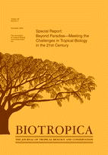
BIOTROPICA
Shaping biodiversity insights for tomorrow's challenges.BIOTROPICA is a premier journal published by Wiley, specializing in the fields of Ecology, Evolution, Behavior, and Systematics. With a robust impact factor and positioned in the Q1 category in its field, it stands out as a leading source of research that informs and shapes our understanding of biodiversity and ecosystem management. Since its inception in 1979, BIOTROPICA has been dedicated to publishing high-quality articles that advance scientific knowledge and foster conservation efforts globally. Researchers and professionals alike value the journal for its rigorous peer-review process and its influence in academic discourse, demonstrated by its Scopus ranking placing it in the 70th percentile among its peers. While the journal does not currently offer open access, it continues to be a vital resource for those engaged in the study of biological systems, making significant contributions to the advancement of ecological science. Readers can expect to find a wealth of innovative research and perspectives that are critical to addressing contemporary environmental challenges.
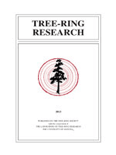
Tree-Ring Research
Innovating Dendrochronology for a Sustainable TomorrowTree-Ring Research is a prestigious journal dedicated to advancing the interdisciplinary study of tree-ring science, encompassing atmospheric science, geology, paleontology, and forestry. Published by the TREE-RING SOC in the United States, this journal serves as a vital platform for researchers and professionals seeking to share innovative findings and develop collaborative methodologies in dendrochronology and its applications. With a commendable standing across multiple categories, including Q2 in Forestry and Q3 rankings in Atmospheric Science, Geology, and Paleontology for 2023, Tree-Ring Research holds an important position within the academic community. Researchers are encouraged to access recent studies and contribute their findings, fostering a rich dialogue that illuminates the complexities of environmental change and forest ecosystems. The journal's comprehensive scope and commitment to quality make it an essential resource for those engaged in understanding the critical role trees play in our planet’s ecological health and history.

Quaternary
Empowering Global Access to Groundbreaking ResearchQuaternary is a dynamic academic journal that focuses on the intricate and evolving field of Earth and Planetary Sciences, with particular emphasis on Earth-Surface Processes. Published by MDPI, a globally recognized and reputable publisher based in Switzerland, Quaternary has established itself as a vital resource since its inception in 2018. The journal has successfully transitioned to an Open Access model since 2019, ensuring that groundbreaking research is readily accessible to a global audience. With a commendable impact factor reflected in its quartile ranks—Q2 in both Earth and Planetary Sciences (miscellaneous) and Earth-Surface Processes—it ranks comfortably within the top 40% of its field, making it an invaluable platform for sharing innovative research and insights. The journal promotes interdisciplinary collaboration and is committed to advancing our understanding of Quaternary science through high-quality publications that appeal to researchers, professionals, and students alike. Positioned as a significant player in its domain, Quaternary continues to foster discussions that shape the future of Earth sciences.
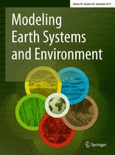
Modeling Earth Systems and Environment
Advancing interdisciplinary insights into Earth's systems.Modeling Earth Systems and Environment is a premier interdisciplinary journal published by Springer Heidelberg, dedicated to advancing the understanding and modeling of Earth's systems and environmental processes. Since its inception in 2015, this journal has established itself as a vital resource within the academic community, attaining a Q1 ranking in Agricultural and Biological Sciences and Q2 rankings in Computers in Earth Sciences, Environmental Science, and Statistics, reflecting its high impact and relevance across multiple disciplines. Featuring rigorous peer-reviewed research, Modeling Earth Systems and Environment aims to bridge the gap between theory and practical application, fostering collaboration among researchers, professionals, and students alike. With access options that prioritize the dissemination of knowledge, this journal is crucial for those seeking to contribute to the fields of environmental modeling and systems science, encouraging innovations that address contemporary environmental challenges.
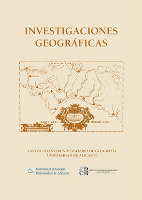
Investigaciones Geograficas-Spain
Connecting global insights through open access research.Investigaciones Geográficas-Spain is an esteemed academic journal published by the Universidad de Alicante, dedicated to advancing the fields of geography, planning, and development as well as earth and planetary sciences. With its commitment to open access since 1983, the journal ensures that research is readily available to a global audience, facilitating knowledge dissemination and collaborative discourse. As reflected in its 2023 Scopus rankings, it holds a commendable position within the Q3 category in both Earth and Planetary Sciences and Geography, Planning and Development, making it a noteworthy resource for scholars and practitioners in these disciplines. The journal's scope encompasses diverse geographical research, aiming to address pressing environmental and societal challenges through empirical studies and theoretical advancements. By contributing to the knowledge reservoir from Spain and beyond, Investigaciones Geográficas-Spain serves as a vital platform for researchers, professionals, and students seeking to enrich their understanding of geographical phenomena.
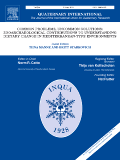
QUATERNARY INTERNATIONAL
Unveiling the Secrets of Geological Change.Quaternary International is a prestigious journal published by Pergamon-Elsevier Science Ltd, focusing on the interdisciplinary study of the Quaternary Period, which encompasses significant geological, hydrological, and climatic changes. With an ISSN of 1040-6182 and E-ISSN 1873-4553, it stands as a critical resource in the realm of Earth-Surface Processes, achieving a strong position within the academic community, evidenced by its 2023 Scopus rank of #32 out of 179 in this category, corresponding to an impressive 82nd percentile. Since its inception in 1989, this journal has provided valuable insights and contributed to the advancement of knowledge in the Earth and Planetary Sciences. Researchers, professionals, and students alike will find a wealth of original research articles, reviews, and case studies that inform and inspire further studies in the Quaternary sciences. Although the journal does not currently offer open access options, its reputation for rigorous peer review and impactful content underscores its significance in shaping scholarly discourse in the field.
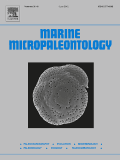
MARINE MICROPALEONTOLOGY
Pioneering Research in Oceanography and PaleontologyMARINE MICROPALEONTOLOGY, published by Elsevier, is a prestigious journal that has been at the forefront of research in the fields of Oceanography and Paleontology since its inception in 1976. Renowned for its high-impact contributions, the journal is classified in Q2 in Oceanography and Q1 in Paleontology, reflecting its significant role in advancing knowledge and understanding within these scientific domains. With an impressive Scopus ranking—27th in Paleontology and 53rd in Oceanography—this journal serves as an invaluable platform for researchers and professionals to disseminate their findings on marine microfossils and their implications for paleoenvironmental reconstructions. While the journal is not open access, its rigorous peer-review process ensures that published articles maintain the highest scientific standards. Researchers, professionals, and students alike are encouraged to explore the latest insights and discoveries that shape our understanding of marine ecosystems through the pages of MARINE MICROPALEONTOLOGY.

Paleoceanography and Paleoclimatology
Advancing Knowledge of Our Planet's Historical SystemsPaleoceanography and Paleoclimatology, published by the American Geophysical Union, is an esteemed open-access journal dedicated to advancing the fields of atmospheric science, paleontology, and oceanography. With an impressive Q1 ranking in all these categories for 2023, the journal is recognized for its impactful contribution, housing research that explores the intricacies of ancient oceanic and climatic systems from 2018 to 2024. Researchers benefit from its robust Scopus rankings, placing it among the top publications in both paleontology and oceanography, with ranks of #5 and #21, respectively, showcasing its significance in the academic community. The journal provides a vital platform for groundbreaking studies that address critical questions regarding Earth's historical climate and ocean processes, making it an essential resource for researchers, professionals, and students alike.
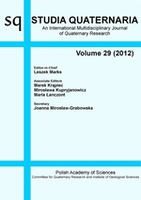
Studia Quaternaria
Illuminating the complexities of our planet's surface.Studia Quaternaria is a leading academic journal published by the Polish Academy of Sciences, Institute of Geological Sciences, specializing in the dynamic fields of Earth-Surface Processes and Geology. With an ISSN of 1641-5558 and an E-ISSN of 2300-0384, this journal has been a prominent platform for scholarly discourse since its inception in 2000. Operating under the open-access model, it aims to disseminate high-quality research that is accessible to a global audience. Studia Quaternaria holds a Q3 ranking in both relevant quartiles as of 2023, indicating its commitment to advancing knowledge in its disciplines despite centering in competitive academic environments. With its publications indexed in Scopus, the journal remains a valuable resource for researchers, professionals, and students looking to stay abreast of innovations and discoveries in Earth-Surface Processes and Geology. Encompassing a broad scope of studies, the journal represents an essential contribution to the geological sciences, fostering a deeper understanding of our planet's changes and processes.

Regional Environmental Change
Navigating the Challenges of Environmental ChangeRegional Environmental Change, published by SPRINGER HEIDELBERG, is a leading journal dedicated to the critical field of Environmental Science, specifically focusing on the global and planetary changes affecting our regional environments. Since its inception in 2005 and continuing through 2024, the journal has been a pivotal platform for disseminating cutting-edge research, insights, and methodologies that address pressing environmental issues. With an impressive Scopus rank, placing it in the top 30% of journals in its category, Regional Environmental Change (ISSN: 1436-3798; E-ISSN: 1436-378X) showcases high-quality academic articles that engage with the multifaceted impacts of environmental shifts, providing researchers, professionals, and students with vital knowledge and data. Although the journal does not currently offer Open Access, it remains a crucial resource for those committed to understanding and mitigating the effects of environmental change on regional ecosystems and communities.